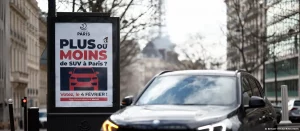Experientia’s Jan-Christoph Zoels at Picnic /1
Create the Future – Collaborative creativity is the guiding theme of Picnic, Amsterdam’s Cross Media Conference, now in its third year with a fascinating rooster of speakers, workshops and artistic events. Putting People First will report on key events over the next three days.
Aaron Koblin, an artist from Los Angeles, showed the use of lasers to generate data clouds in his eerie video with Radiohead’s Home of Cards as a soundtrack. Lounged on Google’s Code section it enabled the remixing of audio and image tracks facilitated by the use of Processing, a visual software for designers and artists by Casey Reas and Ben Fry.
His latest collaboration with MIT’s Sensible City Lab is Currentcity.org, a data visualization of KPN cellphone data of SMS usage in Amsterdam during New Year’s Eve 2007 and Queen’s Day. The time based representation adds a new dimension to understanding people’s communication patterns in select locations during social events.
Dueling with Distance was Stefan Agamanolis‘ metaphorical comparison of fast and slow communication patterns. Drawing on poetic and provocative work done at MIT Dublin and at Distance Lab, he questioned how distraction-free and contextual use of space can support new communication patterns. Mutsugoto enabled poetic and intimate mobile interactions between partners over distance; Isophone suspended callers in sensory deprivation chambers resulting in an increase of stream of consciousness conversations; and Solar Vintage integrated traditional embroidery techniques, LED’s and solar cells in embellished objects. Stefan heads up DistanceLab.org, a research lab in Scotland.
Linda Stone presented a podium discussion on The Emerging Real-Time Social Web deploring the ludicrous notion of ‘friending’, fake friends and the social pressures of being available in social web networks.
- Jyri Engeström, founder of Jaiku and now at Google, focussed on how social objects draw people together and may enable new ‘social peripheral visions’ in supporting social relevance beyond the documentation of activity streams.
- Matt Jones, founder of Dopplr, recalled Jane Jacob’s request for a diverse spectrum of social roles to support the health of social cities. Dopplr supports asymmetric and informational relationships in letting other people’s travel plans emerge.
- Addy Feuerstein presented Allofme.com, a time line-based personal image collection and annotation tool. In this social network recorder friends and family can collaborate in establishing time lines of themselves, compare individual memories and public events.
- Philip Rosedale of Linden Lab interpreted Second Life’s maker culture as allowing for an increasing diversification of creativity. However, the scarcity of people’s attention and the missing of curatorial intentions resulted in images full of crafted objects devoid of avatar interactions.
The highlight of the evening was Itay Talgam‘s Conducting Creativity, a session dedicated to explore the creative leadership and collaboration style of famous conductors. Videos showing Zubin Mehta’s precise and autocratic conducting style, the stoicism of Richard Strauss, and the passion and emotional subtlety of Leonard Bernstein highlighted different approaches to guiding creative teams.
For more Picnic reporting, check also Bruno Giussani, Hubert Guillaud (writing proficiently in French), Ethan Zuckerman, and Ernst-Jan Pfauth and Boris Veldhuijzen van Zanten.




[…] bookmarks tagged emotional Experientia?s Jan-Christoph Zoels at Picnic /1 saved by 4 others kingdomheartsfan93 bookmarked on 09/25/08 | […]